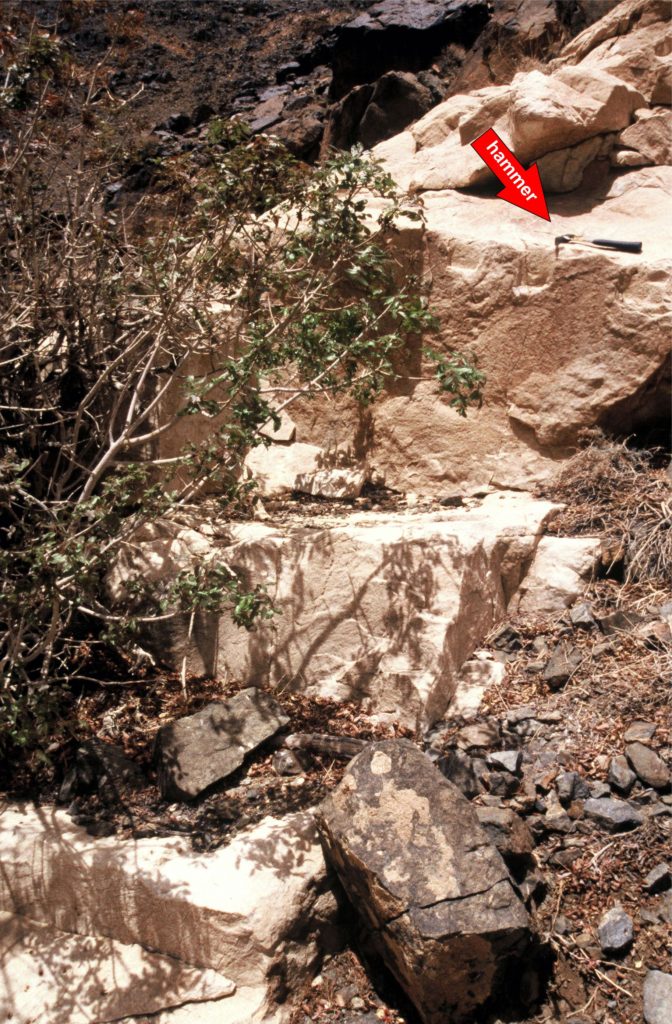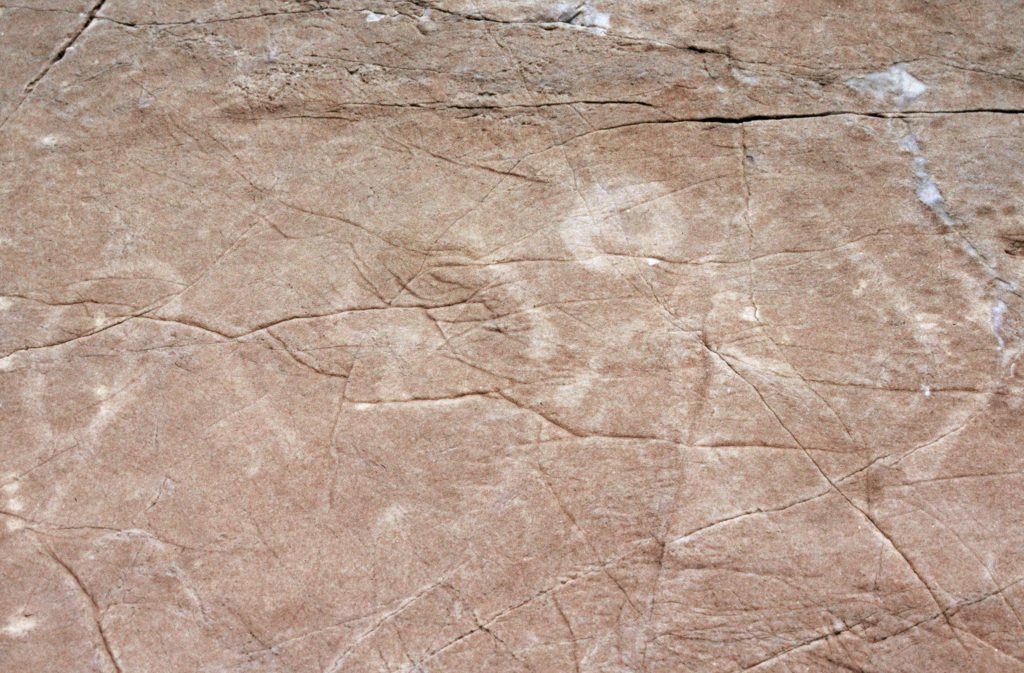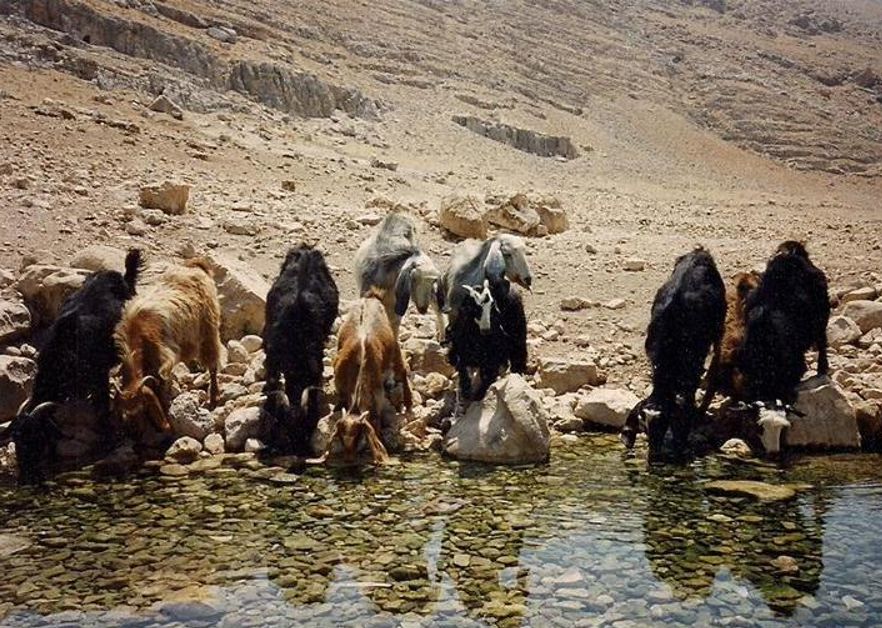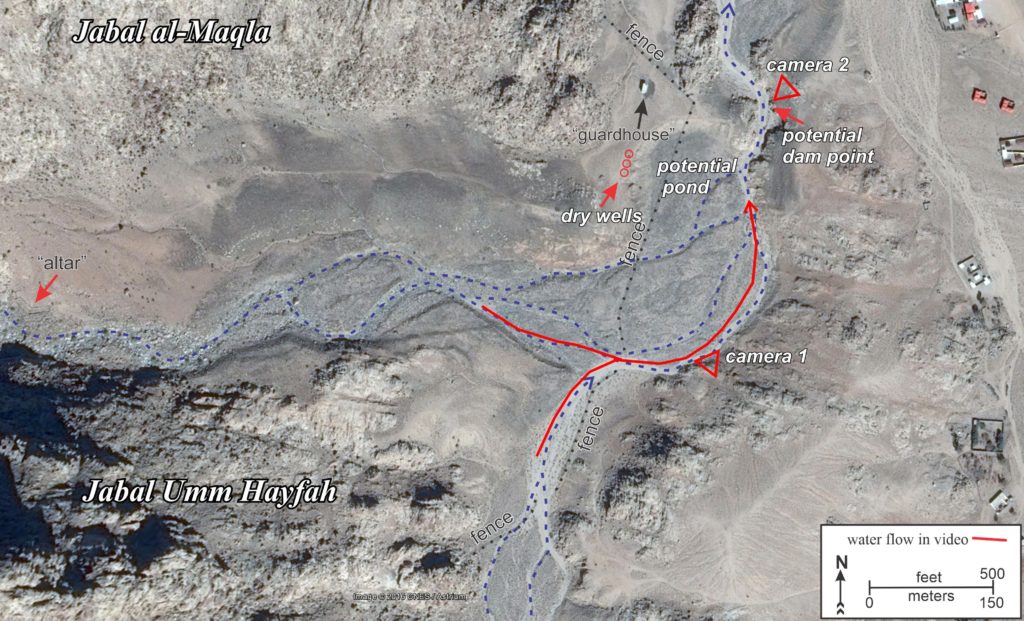The Mystery Marble Inscription at Jabal-al-Maqla. Within the Jabal al-Lawz range in northwest Saudi Arabia, Jabal-al-Maqla has been theorized as a candidate for the biblical Mount Sinai. At the eastern base of this mountain, remnants of a number of ancient white marble pillars have been found. They were quarried from a small outcropping of marble lying at an elevation of 6600 feet, about 1500 feet above the pillars.
The below photo looks down the steep slope from the marble quarry. For scale, note the people in the distance. The pillars and quarry are pictured and described in detail in my 2019 book, The Exodus Mysteries: of Midian, Sinai & Jabal-al-Lawz.
When I visited the quarry in 2003, I noted faded markings on a vertical, flat marble surface in the area pictured below. For scale, note the hammer. An almond tree is growing to the left (Jabal al-Lawz means “almond mountain”). The dark rock at the bottom is from the ancient volcanic basalt that covers the upper elevations of Jabal-al-Maqla and vicinity.
The markings (shown below) appeared to be composed of Greek or Arabic characters. I had posted this photo in Figure 14.25 on page 289 of The Exodus Mysteries, asking for reader input. Greek characters would likely reflect an origin many centuries ago while Arabic characters would suggest more recent dating.
Just recently, a reader located in Saudi Arabia theorized that the characters were Arabic numbers that represented an Islamic date. In explanation, year one of the Islamic lunar calendar coincides with AD 622, the year in which Muhammad and his followers migrated from Mecca to Medina (Yatrib). This migration is known as the Hijra. Islamic years are signified by the abbreviation “AH,” derived from the Latin Anno Hegirae. The current year, 2020, corresponds with AH 1441-1442.
Given this information, the inscription appears to include the date 1415, as diagrammed below. There are some other adjacent markings that could be remnants of Arabic letters, but they are rather obscure.
The year AH 1415 is very recent, corresponding with our 1994-1995. What could explain this date? The 2002 Saudi archaeology report, entitled Al-Bid’: History and Archaeology by Al-Ansary et al., stated that Jabal al-Lawz archaeological survey work was done 1-15 April 1995 (p. 62). The work included an account of the Jabal-al-Maqla marble deposits and quarry. Hence, someone in that survey party apparently spray-painted the date, and perhaps their name, on the marble face that I discovered eight years later in 2003. That paint did not appear to hold up well to the weathering.
Unfortunately, these markings did not add any information about the dates or circumstances of the original quarry work, which I estimate to have been done about AD 150-250. The Exodus Mysteries: of Midian, Sinai & Jabal al-Lawz has a 30 page chapter on this topic entitled “Maqla Marble Mystery.”







